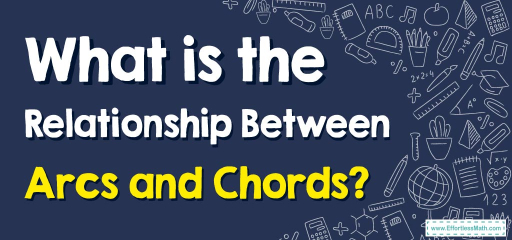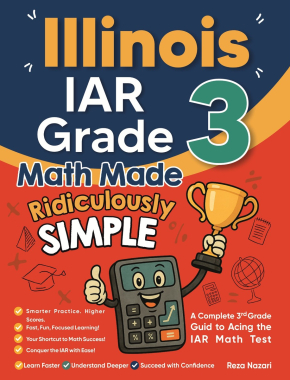What is the Relationship Between Arcs and Chords?

- Arc: An arc is a continuous segment of a circle’s circumference.
- Chord: A chord is a straight line segment whose endpoints lie on the circle. Note: The diameter is the longest chord of a circle.
- Chords that are equidistant from the center of a circle are equal in length.
- Equal chords of a circle subtend equal angles at the center.
- The perpendicular bisector of a chord passes through the circle’s center.
- Equal chords intercept equal arcs.
- The angle subtended by an arc at the center is double the angle subtended by it at any point on the remaining part of the circle.
Examples
Practice Questions:
- In a circle with a radius of \(7 \text{ cm}\), what is the approximate length of a chord that intercepts an arc of \(90^\circ\)?
- If an arc subtends an angle of \(30^\circ\) at the boundary of a circle, what angle does it subtend at the center?
- \( c \approx 2 \times 7 \times \sin(45^\circ) \approx 9.9 \text{ cm}\)
- \( 2 \times 30^\circ = 60^\circ \)
Original price was: $109.99.$54.99Current price is: $54.99.
Original price was: $109.99.$54.99Current price is: $54.99.
Original price was: $114.99.$54.99Current price is: $54.99.
Related to This Article
More math articles
- How to Find the Expected Value of a Random Variable?
- 3rd Grade Common Core Math Practice Test Questions
- The Ultimate PSAT 8/9 Math Course (+FREE Worksheets)
- In-Depth Guide to Understanding How to Combine The Limit Laws
- How to Factor the Difference between Two Perfect Squares?
- How to Graph Lines by Using Slope–Intercept Form? (+FREE Worksheet!)
- 6th Grade ACT Aspire Math FREE Sample Practice Questions
- 7th Grade ISASP Math Worksheets: FREE & Printable
- Question Types on the ACT Math Test
- How to Add and subtract Fractions with Like Denominators in Recipes




























What people say about "What is the Relationship Between Arcs and Chords? - Effortless Math: We Help Students Learn to LOVE Mathematics"?
No one replied yet.